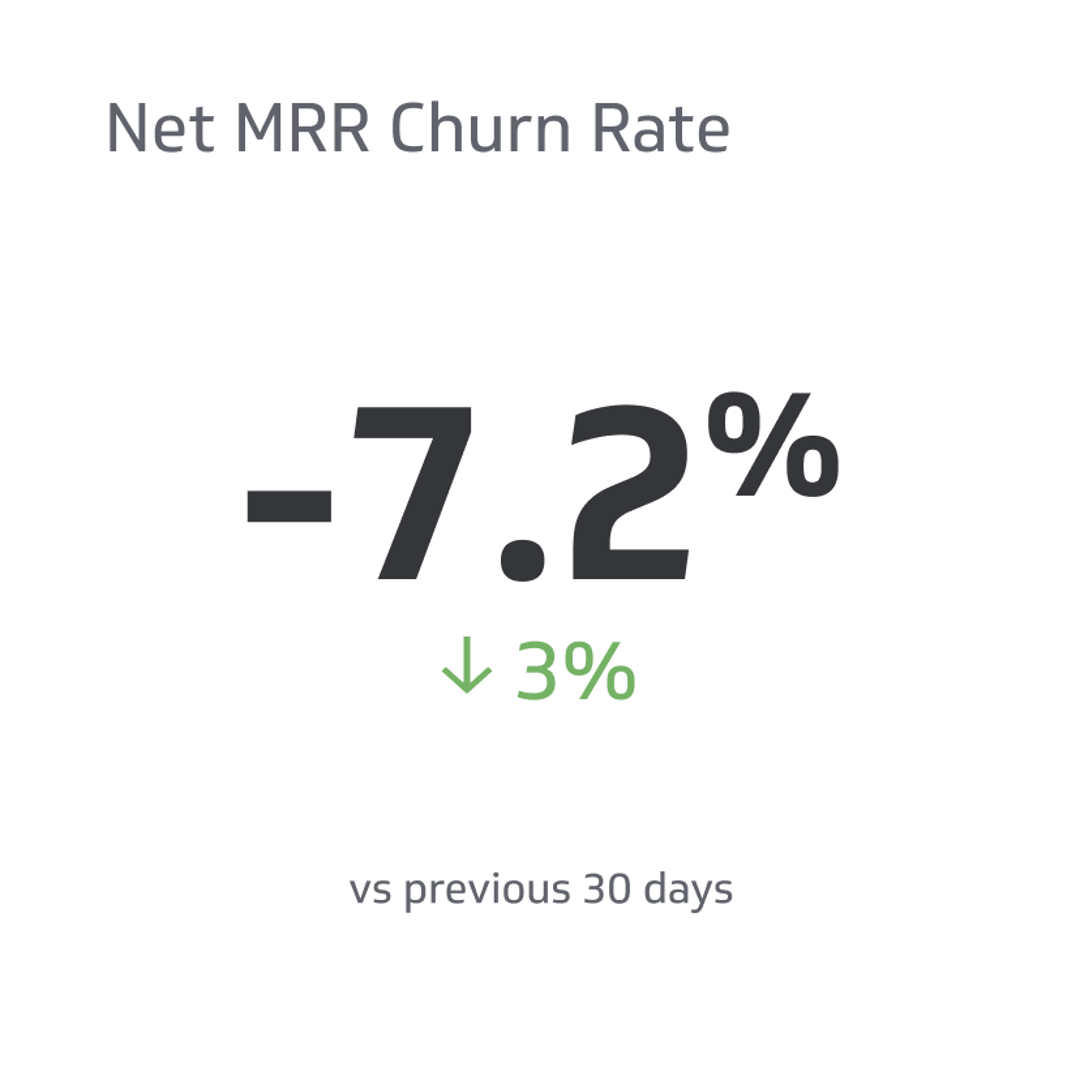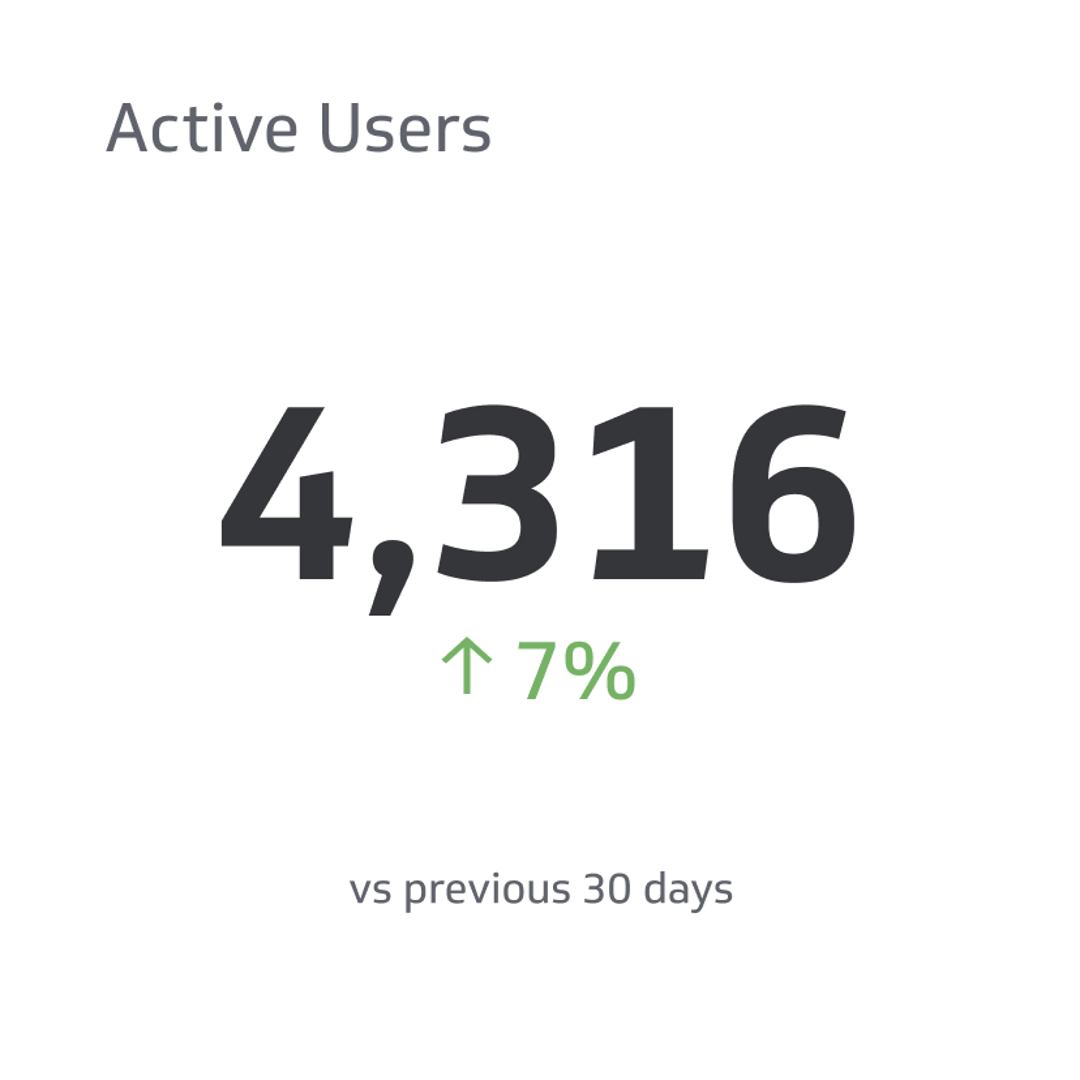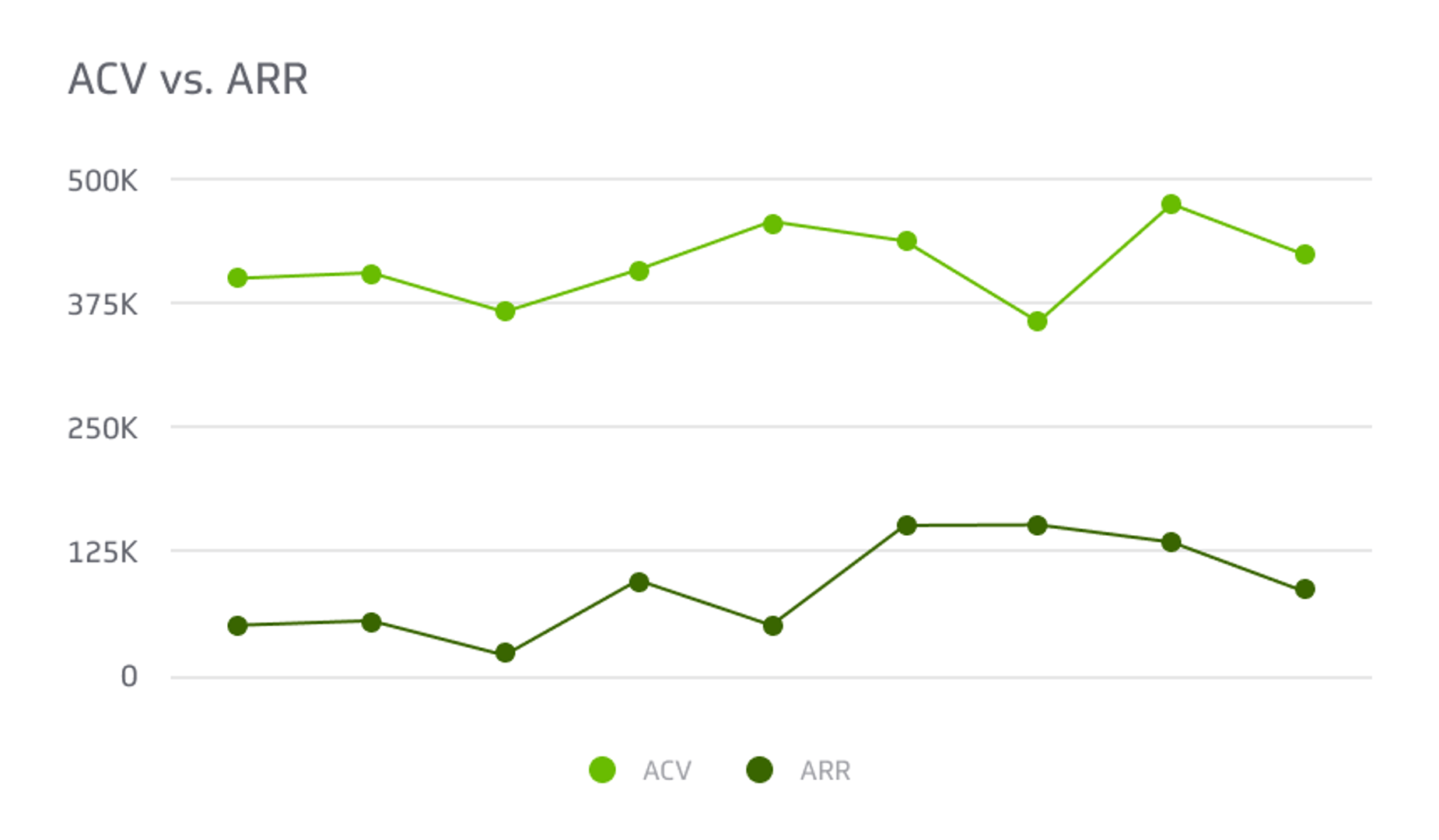MoM MRR Growth Metric
Measure how fast your MRR is growing with MoM MRR Growth
Track all your SaaS KPIs in one place
Sign up for free and start making decisions for your business with confidence.
.png)
MoM MRR Growth (%) = Net MRR (This Month) - Net MRR (Last Month) / Net MRR (Last Month)
MoM MRR Growth Definition
For software companies operating under monthly subscription revenue models, monthly recurring revenue (MRR) is a critical metric, used to measure predictable, recurring revenue. Month over Month (MoM) MRR growth is a measure of forward momentum, market traction and business expansion. MoM MRR Growth is calculated by subtracting Net MRR in the current period from Net MRR in the previous period, and dividing that figure by Net MRR in the previous period. Net MRR is calculated by adding Expansion MRR (increasing monthly recurring revenue generated through a current client) to New MRR (monthly recurring revenue contracts beginning in the current period), and subtracting lost MRR or “Churn” (MRR lost in the period due to the cancellation or non-renewal of contracts). For an annualized version, use the ARR Growth Rate metric.
Net Revenue Retention Rate (NRR) completes the trio of metrics you need to fully understand the flow of revenue. NRR measures the percentage of retained revenue from existing customers in a given time period.
How do you calculate MoM MRR Growth?
In August a subscription based software firm generates Net MRR of $550,000. In the month of September the same firm adds $100,000 in New MRR, upsells current accounts to a tune of $50,000 in Expansion MRR, and loses $20,000 in Churned MRR. In this case, MoM MRR Growth would be calculated as:
Net MRR (This Month) = $550,000 + $100,000 + $50,000 - $20,000 = $680,000
Net MRR (Last Month) = $550,000
MoM MRR Growth % = $680,000 - $550,000 / $550,000 = 23.6%
Therefore, from a pure revenue standpoint, we can say that this company is growing at a monthly rate of 23.6%.
What does growth rate tell you?
Month over month growth captures the growth rate of your business. Month over month MRR growth rate should be a signal for what’s working well and what isn’t.
What is a good MoM MRR growth rate?
There are no definitive SaaS benchmarks for MoM MRR growth, however a number of general targets and rules of thumb have been suggested for SaaS companies of different sizes, at different stages of growth.
According to MetricHQ, the average annual MRR growth rate across all companies in a 2019 survey was 52%. The benchmark depends on the stage of the business, though. For early stage businesses, a higher growth rate is a better indicator than a lower one.
MRR Growth Challenges
- Identifying the drivers behind MRR growth (or lack thereof); is it market traction, abnormal sales or creative accounting? Figuring out what’s driving MRR growth is important so you can focus your energy and resources.
- Forecasting future MRR growth based on past results can be difficult as SaaS companies don’t grow linearly. Is strong MRR growth repeatable and sustainable, month over month?
MRR Growth Best Practices
Christophe Janz, Managing Partner, Nine Point Capital
- Don’t try to BS investors by being creative in your interpretation of your data; don’t try to read exponential growth in your numbers if its not there.
- Talk about MRR growth in absolute terms ($) rather than % when you’re at fairly low absolute MRR level (below $20k).
- When you’ve reached “initial traction” of around $1-2m in ARR, consider talking about year over year growth instead of month over month growth - “there’s no strong rationale for that, but I think if you’re talking about longer periods of time, year over year growth is more intuitive to understand”.
- Be mindful of where you are in your business life cycle when setting MRR growth targets: “the problem with an exponential growth assumption is that for early-stage startups it makes short-term goals too easy and longer-term goals such as capital efficiency too hard”.
Jason Lemkin, Venture Capitalist and Founder, SaaStr
- “it really doesn't matter how long it takes you to get to that first $1m or so, Initial Traction. Some get there fast. Some take years. It doesn't matter. So long as you don't quit, get exhausted, or run out of capital.”
Greg Beaufait, Partner, Dundee Venture Capital
- Have a repeatable sales process: “If a company can hit 15-20% MoM growth for 6+ months, it’s likely they have figured out a sales process where the levers driving sales are repeatable. Nothing excites Series A firms more than writing a $2-5 million check for sales and marketing where the time-to-close, acquisition channels, and sales processes are tested, profitable, and scalable.”
How to monitor MoM MRR Growth in Real-time
Once you have established metrics for measuring MoM MRR Growth, you’ll want to establish processes to monitor this and other SaaS KPIs on a continual basis. Dashboards can be critical in this regard.
Learn more about how to track your MoM MRR Growth on a SaaS Dashboard.
MRR Growth: Top Resources
The Problem With Month-Over-Month Growth Rates, Christophe Janz, The Angel VC
How Fast Must a SaaS Startup Grow the Raise a Series A?, Tomasz Tunguz
What is a good month over month (MoM) growth rate for a SaaS company?, Jason Lemkin Via Quora
The Magic SaaS MRR Metric, Greg Beaufait, Dundee Venture Capital
Understanding MRR, SaaSOptics
Bessemer Cloud Computing Law #5: Play Moneyball with the 5 C’s, Byron Deeter, Bessemer Venture Partners
Related Metrics & KPIs



